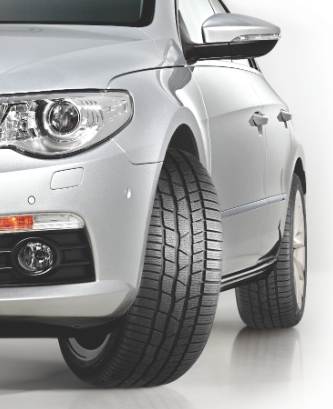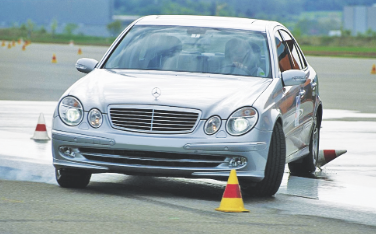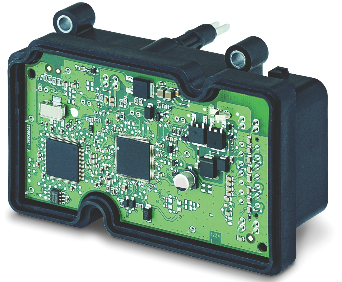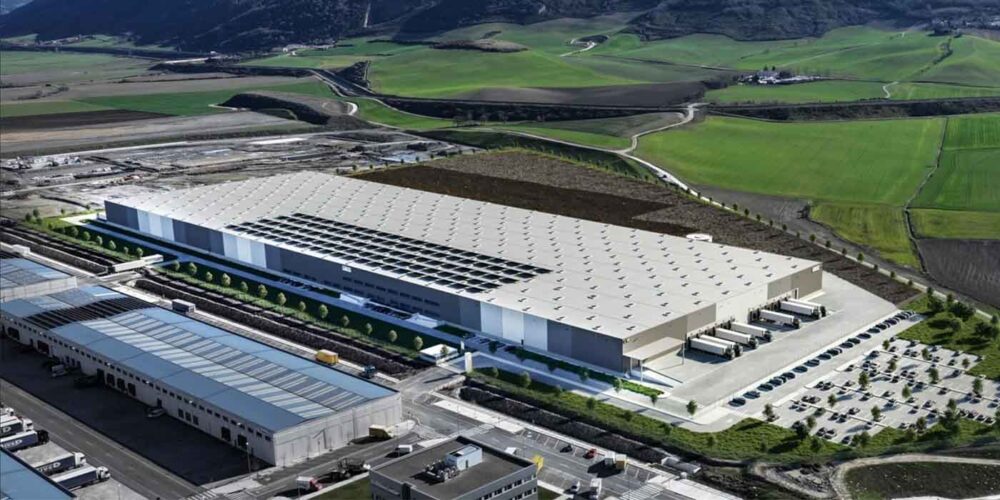By Skip Scherer, Contributing Writer
 Electronic Stability Control – ESC – introduced in 1995 and touted as the second most important advancement in auto safety after seat belts, became standard equipment on every 2012 passenger vehicle.
Electronic Stability Control – ESC – introduced in 1995 and touted as the second most important advancement in auto safety after seat belts, became standard equipment on every 2012 passenger vehicle.
ESC is supposed to help drivers maintain safe control of their vehicles and prevent accidents. However, it will be the tires that determine the effectiveness of ESC for every vehicle. Simply put, ESC is on-board computer technology that helps improve a vehicle’s steadiness on the highway by detecting and minimizing skids and maintaining steering control.
It works whether a vehicle is braking, accelerating or coasting by detecting understeer from front-end slides, oversteer from rear-end slides, and hydroplaning. It performs in any driving condition, such as dry, wet or icy pavement, and at any speed.
In general, ESC systems monitor a vehicle’s stability 25 times per second to detect imminent skidding. It uses sensor signals that compare the intended direction in which the driver wants the vehicle to move with the vehicle’s actual direction. If there is a discrepancy, the system makes adjustments to help prevent skidding and keep the vehicle on its planned path.
During normal driving, ESC works in the background and continuously monitors steering and vehicle direction. The driver’s intentions are determined through the measured steering wheel angle. The actual direction is determined by measured lateral acceleration, yaw or vehicle rotation, and each wheel’s road speed.
 When a loss of steering control is detected, ESC automatically – and in the blink of an eye – uses the vehicle’s braking system to correct its path, literally steering the vehicle back on course. Braking is automatically applied to individual wheels.
When a loss of steering control is detected, ESC automatically – and in the blink of an eye – uses the vehicle’s braking system to correct its path, literally steering the vehicle back on course. Braking is automatically applied to individual wheels.
For example, braking a front wheel on the outside of a skid would counter oversteer, while braking an inner rear wheel would counter understeer. Some systems combine select braking with reduced engine power to help regain control of a vehicle.
The corrections happen so quickly that without a dashboard warning light, the driver might not know the vehicle’s on-board controls just helped avoid a potentially serious accident and injuries.
A Look Back
ESC and ABS are not the same thing. ABS prevents wheel lockup during braking. Speed sensors on a vehicle’s wheels detect developing problems and the on-board control unit sends signals that pump brakes rapidly to prevent individual wheels from locking.
Every year ABS/ESC hydraulic control units get smaller and lighter. They are also becoming more functional with the ability to connect with more sensors to add features like automatic braking, adaptive cruise control and even regenerative braking control for hybrids.
NHTSA concluded that ESC reduces passenger car crashes by 35% and SUV crashes by 63%. It also determined that ESC was effective in reducing accidents of single vehicles that ran off the roadway and rolled over or struck a stationary object.
A similar study by the Insurance Institute for Highway Safety reported that ESC prevents 56% of fatal single-vehicle crashes and almost 80% of fatal single-vehicle rollovers.
The Role of Tires
In spite of all the high-tech electronics controlling a vehicle’s handling capabilities and stability, its four tires provide the contact points on a roadway’s surface that ultimately control the amount of slipping and sliding that can take place. ESC is only as good as the available traction.
So, what do tire manufacturers consider when designing a tire that taps into ESC’s full potential? A spokesperson for one of the three largest tire companies, who asked not to be identified, said there is no special consideration given to ESC when tires are being developed.
At first, the response may seem surprising. However, tire dealers know that properly designed tires provide optimum traction for specific vehicles. A car’s design, weight, center of gravity, speed, direction and many other traits, as well as road conditions, add up to its overall balance. The tires contribute to the vehicle’s overall stability. 
Since ESC is safety technology and not a performance enhancement, it can’t improve on traction attributes already built into a tire. ESC doesn’t improve the inherent traction of tires, but good tires can maximize the safety maneuvers provided by ESC, such as better-controlled cornering.
The conclusion: ESC can only work when traction is available. Bald tires render ESC ineffective in rain. Hard tire compounds render ESC almost useless on ice.
A tire technician’s role in maintaining a fully-functioning ESC starts with understanding the technology and educating his or her customers. Informing drivers about proper tire maintenance, as well as using appropriate tires for the winter season, ensures that on-board ESC, ABS and Traction Control technology improve the safety of the driver and others. Consistent tire wear is important to ESC’s complex electronics. Conflicting tire diameters and air pressures can fool the sensors.
Technicians must know if the model of a vehicle that has undergone wheel alignment service requires its ESC steering angle sensor to be reset. Failure to perform an OEM’s required SAS reset procedure after an alignment could create ESC performance issues.











